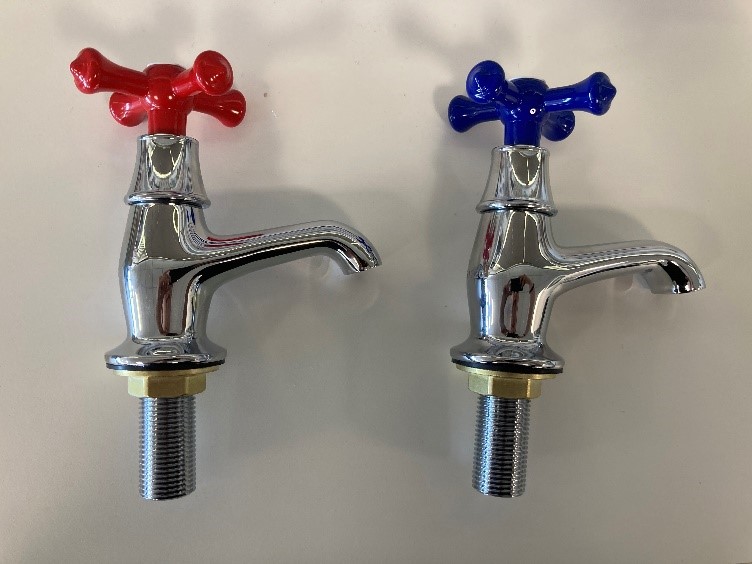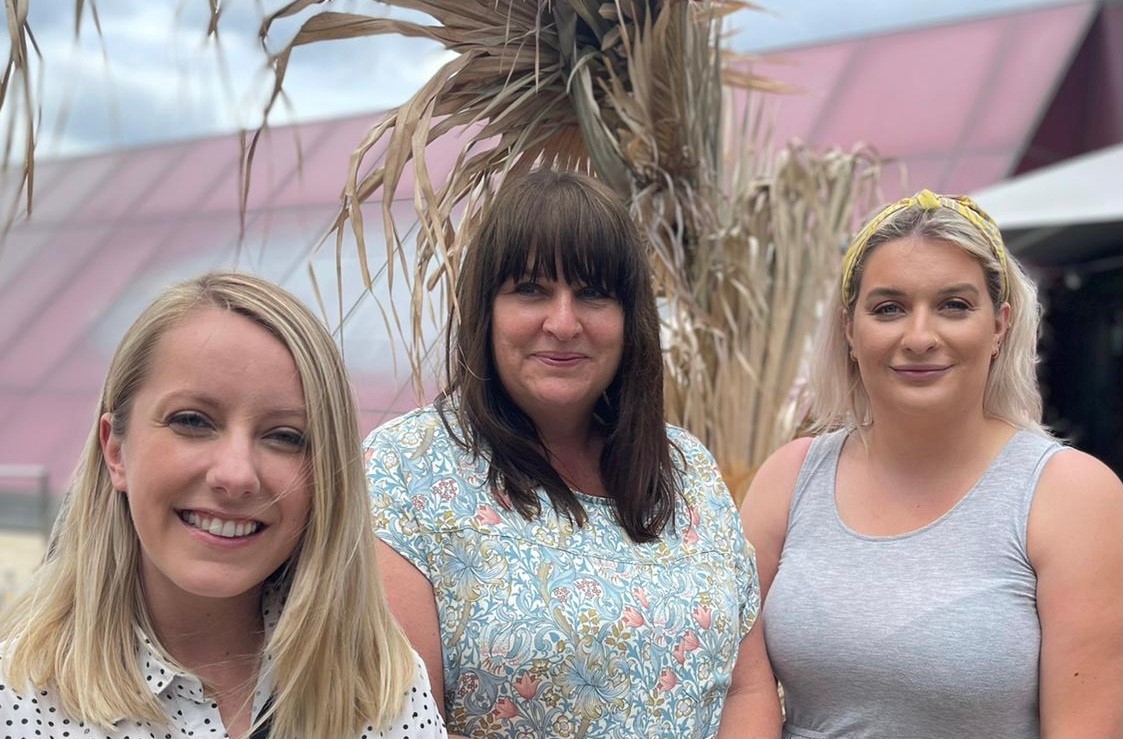The Savista Developments design team, and winners of the Innovation Challenge met with Head of Innovation, Claire Johnsen recently to update her on their project milestones and share with her their plans for their winning idea ‘Good dementia bedroom design.’
The Innovation Challenge, which was open to all team members at Savista and our sister company Hallmark Care Homes was introduced to give employees the opportunity to put forward their innovative ideas and solutions with the aim of improving our care provision across our current and future businesses.
The challenge, which ran from June to July last year, received 269 entries with three winning ideas being selected, one of which was a good dementia bedroom design which was put forward by Laura Baigent, Chloe Morgan and Aimee Casbolt from the Savista design team.
As a team how did you come up with your winning idea?
We wanted to put a real emphasis and focus on the bedroom designs and design them to their full potential. A resident’s bedroom is something which is very important to us as a team. It is a person’s own individual space, which is unique to them and a space to make their own. Giving residents the opportunity to design a space which can be customisable and be a true reflection of one’s personality. Providing all those typical home comforts we all know and love, whatever they may be to that individual.
We wanted to put a real emphasis and focus on the bedroom designs for our residents living with dementia, as their environment can be so impactful on their daily lives and felt this was a key space we could make a real difference. We hope by designing in these changes we can compensate for impairments through the built environment, add additional spaces for personalisation (to also assist with wayfinding, adding a sense of familiarity to the space), and create a design which is customisable for the individual.
What’s your background and how did you become interested in design?
Chloe – I first became passionate about dementia design whilst working for Hammond Care in Australia, alongside the Dementia Centre. I spent two and half years designing and building dementia villages within the Sydney and Melbourne area. This experience really instilled in me the profound effect of which the environment can have on a person living with dementia and how people can be enabled by their environment enhancing their daily quality of life. I was fortunate enough to work alongside individuals who have a wealth of experience and knowledge, with true care and passion – this has had a big impact on the way I design and it is something I am passionate for and am always keen to learn more about.
Laura – Having worked in the sector for over 20 years designing for retail, hospitality and care, I have developed a particular interest in the way we interact with our environment and how emotive a space can be. Attention to detail and considering the ergonomics of a design is always crucial to me, to be able to optimise the wellbeing, experience and performance for the end user, which is why as a team we were passionate about developing the dementia bedroom scheme. To design something that gives pleasure, is practical, safe and aesthetically stimulating for our dementia residents was such a rewarding brief.
Aimee – I worked for the NHS, for 11 years in various departments and dementia care was very much at the forefront of the care we delivered. Whilst the environment was very different, it has given me a huge understanding of dementia and the level of care that we need to provide to ensure a safe, empowering environment. Since joining the Savista design team two years ago, as a team we have worked on developing our knowledge and understanding of the designs which can help maintain our residents’ levels of independence for as long as possible, through providing stimulating and engaging environments. Dementia care has a very special place in my heart, not only from my NHS career but as my Nan was diagnosed with dementia five years ago, it’s become very personal to me and to be able to work on a project that creates a space which fits around the needs and will hopefully lead the way for future care homes.
When you created your design what solutions were you looking to achieve?
Good design makes connections, and we want our residents to feel connected with their home and their individual bedroom space, a space of their own. Every type of design exists to help solve a problem – we found ‘one size does not fit all’ and therefore a combination of solutions were required as a ‘design menu’ to assist residents living with dementia, based on their individual requirements.
This flexible design menu allows the team to add and remove features in harmony with the resident’s needs, a few examples of these are listed below:
- Traditional Radio – A Bluetooth radio means different music could be played for each resident, for example calming music, a story, or a resident’s favourite artist. This system could also be built in in the ceiling in future builds. Including within the en-suite (if preferred). The radio design itself, would be one that is recognisable to the resident and easy to use and function.
- Loss of sense of smell – Aromas can have a big impact on a person living with dementia. By adding a Bluetooth operated ‘Aroma Scents’ into bedrooms that can be adjusted to the individual resident could assist in a number of ways, for example; if a resident is struggling with sleeping, lavender scents could be used. Alternatively, if a resident requires reminding of eating, food scents could be added around breakfast, and lunchtime such as homemade bread, or bacon.
- Tactile cushions – which are colourful and soft to touch with differing textures from a sensory point of view.
We also designed in some more ‘fixed’ features which we felt would be beneficial in navigating around the bedrooms, a few examples of these are as follows:
- A greater use of contrast, not just the colour shade but within key items and pieces in the room. For example, the light switch, contrasting the switch itself against its back plate and the wall will help the resident’s personal independence in navigating the room.
- Lighting built into the furniture – with the ageing eye alone, it can be difficult to identify the contents of your chest of drawers (even with a glazed drawer front), this combined with poorer visual processing – we decided to add lighting into the tops of the drawers and cabinets. Therefore, when a drawer or cabinet is opened – this automatically switches the internal light on, highlighting all the contents.
- Powder coated Taps – there are many visual impairments associated with dementia, therefore by moving away from a single ‘H’ or ‘C’ sign to denote Hot / Cold which can be difficult to read (even without the ageing eye), powder coating the taps in clear blue / red colours clearly highlights the hot and cold functions of the taps to the end user.
- Lighting – Circadian lighting, we all need good exposure to daylight to kickstart our circadian rhythm (and darkness at night, to assist with falling asleep and begin to wind down for the day), even more so with dementia. Putting this technology into the bedrooms will help create seamless light adjustments from bedrooms to corridors and communal areas, where it is currently implemented in a few of our recent builds.
- Mirrors within ensuites – Mirrors can be distressing to some individuals living with dementia, therefore the bathroom cabinets to the ensuites have been designed as such, if a person is finding the mirror distressing, an alternative cabinet option can be easily switched in by our maintenance team.
How is your project progressing and can you give us a preview of some of your plans?
We recently received some samples of the powder coated taps, and we are really impressed with these!

How will these ideas support residents living with dementia?
The main focus of our concept was to create an enabling environment for our residents, which supports independence and wayfinding whilst compensating for impairments, where possible. Adding additional features within the space in which residents can personalise their room can give the room a sense of familiarity to the resident and allows them to add all those creature comforts which are personal to them, which they also recognise from their own lives.
Have you worked with any other members of the Savista and Hallmark team to bring the idea to fruition?
The design team have worked closely with Hallmark Care Homes’ Head of Dementia Care and Wellbeing, April Dobson to progress hers, and the company vision to make an inclusive community for residents living with dementia.
Savista’s Mechanical and Electrical Project Manager, Dariusz Galas has assisted the team with many of the key items of the production from the bespoke taps to the circadian lighting. Lighting in particular is such an important aspect of the design and brings an important touch point to the overall design.
The Assistant Site Manager and Site Manager, Jake and Shaun and the Savista Team at Angmering, have been integral in bringing this concept to life. Integrating any new scheme, raises new challenges, however the construction team have embraced our ideas and are excited about implementing this new design.
Executive Chairman Avnish Goyal and the senior Executive Leadership Team have supported this project from the get-go and have been so encouraging and supportive. They have pushed us and given us the freedom to be creative and the opportunity to bring our design to fruition.
